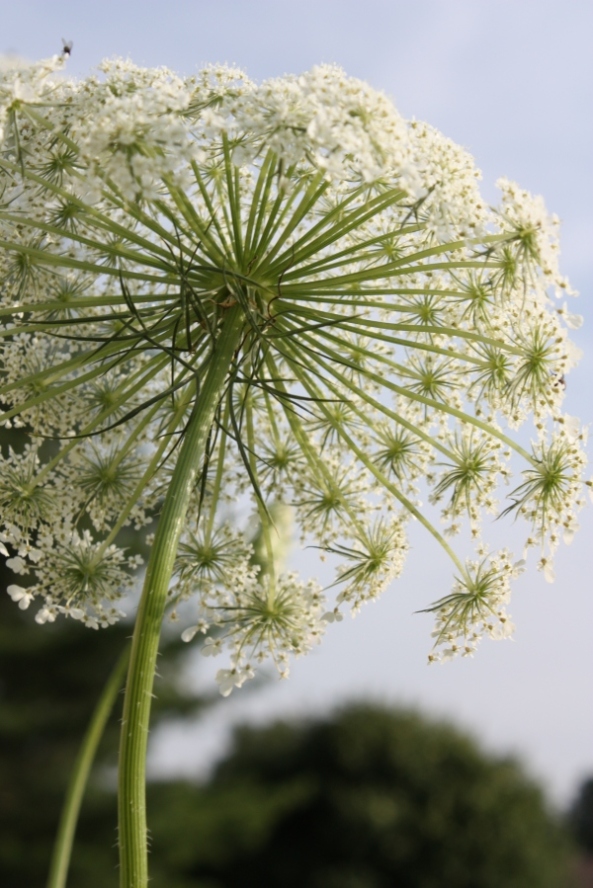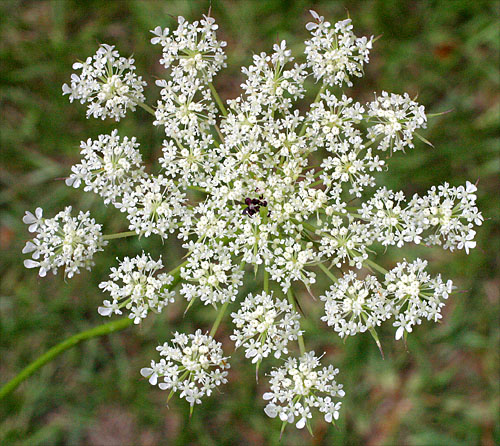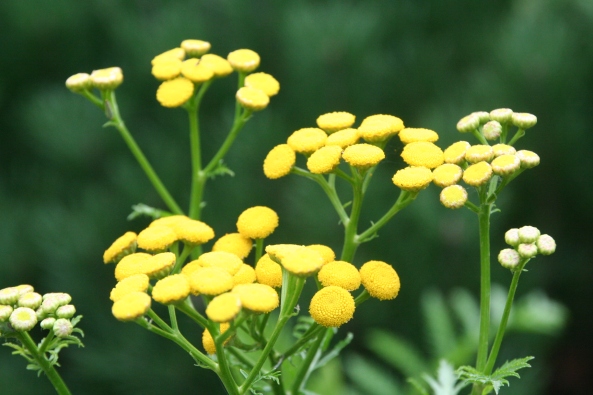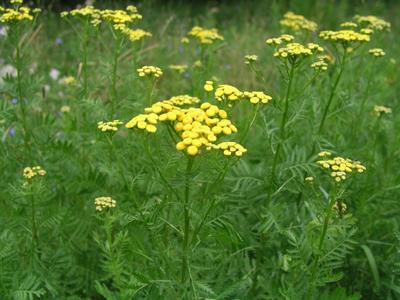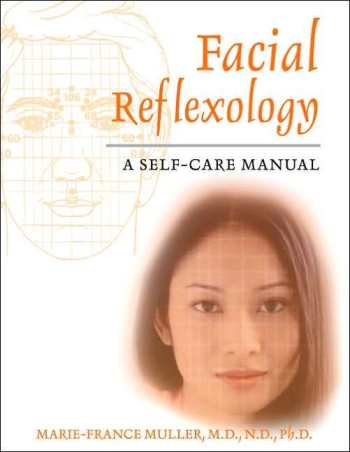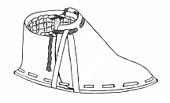My 6-Step Herbal Contraceptive/Birth Control Program
To easily link this article, copy and paste: http://wp.me/pEY6Z-4k
Thank you Sean Donahue for hosting this awesome Blog Party – Herbs for Sexual Health!
Disclaimer: Even though it is shown that one can use herbs and other natural methods for birth control with success, this post, or any part of it, cannot make any guarantees whatsoever. My personal plan is merely here for your information, meant to be read in its entirety, and the hope is that you would find the drive to do your own thorough research. The term “research” can mean not only reading materials on herbology, anatomy, and related topics; but also a deep inner knowing of your body and its needs, an ability to communicate with your body, an ability to focus and will-fully set balanced and proper intention, and an ability to communicate with the plant kingdom. If you manifest an undesired pregnancy, the blog poster and/or all involved are not responsible, and therefore they are to be held separately and collectively harmless.
So – shall we continue? I hope my story and the system I personally use inspires you to find and successfully implement your own system of natural and/or herbal birth control!
My story begins with an attempt to take the lowest dose available for birth control pills in the early 1980’s – partly for birth control, but partly due to having serious adult acne, where friends of mine had it clear up when they went on the pill, despite the fact they gained weight. Since I have a very thin build (and still do), this seemed like a good trade-off. Little did I know that I would be so sick that after trying it for two months, I had lost so much weight that I would faint at work, but couldn’t eat due to the extreme nausea that never let up. The doctor was crazy enough to tell me to wait one more month, and then I would be “fine.” Little did he know that I would likely be dead of starvation before then! So, I went off. I later got married, had two kids, and got divorced by the early 1990’s.
Still struggling with adult acne, a friend of mine at my legal secretary job told me I ought to try the pill again, since they make them “better.” So, I tried again, different types over a period of approximately three years – and I broke out worse, and even became more vulnerable to something I struggled with in the past – yeast infections. I stopped again.
By 2001, I was again prompted by a different friend, who said (guess!) they made the birth control pill even “better.” So, I gave it a shot again – the Ortho-Tri-Cyclen types, as they advertised they were the best for skin problems. I didn’t have nausea, I didn’t get yeast infections, and I could see I was breaking out less. I thought my problem was solved. But little did I realize what was really happening. These new types of birth control pills only buried the symptoms much deeper in the body, so that you wouldn’t notice things – and not for quite awhile later.
As I remember, it was about a year later when I started to have mild headaches at the base of my skull. I didn’t equate it with the birth control pill at the time because I had already been taking it for about a year with no noticeable problems. Interestingly, my psychic abilities were growing at the same time, so I attributed the headaches to that instead. What was really happening was that the chemical hormones present in the pill, which cannot break down and leave your body, were accumulating – and not just to give me headaches, as I was about to learn the hard way!
I got blissfully remarried in 2003, and by early 2004, I landed in the emergency room due to excruciating pain in the right side of my abdomen, where it could not be determined what exactly was wrong with me until the surgery was performed. A large cyst developed on my right Ovary, and when I had leaned over, the ovary turned and wasn’t able to turn back, twisting my Fallopian Tube and causing pain. Even the X-rays and CAT scans showed body fluids around that area – but they thought it could be a toxic and ruptured Appendix, of which could be life-threatening. So, I had to agree for them to take my Appendix out regardless of what they found since they could not risk leaving it in under the circumstances. It was only after the surgery that I learned that they removed my very healthy Appendix and my right Ovary. The X-rays and CAT scans also revealed three fibroids inside of my Uterus, as well as a cyst beginning to develop on my left Ovary, and upon asking them what causes these types of things, they provided no answers. The doctors and the staff told me that when those begin to “bother” me, to just call them to schedule my Hysterectomy!! This was the beginning of my healing journey and what a wake-up call it was – because I was not going to get a Hysterectomy!
By 2005, I lost lots of my hair, had lots of body pain and was cold all the time (especially my upper body), and had migraine headaches for three days prior to my menstrual cycles. I did not know these were symptoms of hormonal imbalance until I researched it. Upon digging deeper, I also learned that all of my symptoms as well as the actual problems were all documents side-effects of (you guessed it) the Birth Control Pill! By 2006, I was determined to use natural methods of re-balancing my hormones and heal fully. I also wanted to see what was possible for natural and herbal contraceptive methods.
I manifested an excellent herbal education, and became a Master Herbalist through the School of Natural Healing in Utah. Through my new knowledge, along with dowsing to read my body’s needs, I figured out the herbs to re-balance my hormonally-wacky body – the main one being Black Cohosh and other herbs that provided cleansing of my system (especially my liver), and nourishing herbs that helped me get back to normal. On an energetic level, I decided to intend creating an energetic right ovary and appendix, so I could function well again. After a couple months, no more migraines! My body pain continues to lessen with each cycle too! I shaped up my diet and while I don’t always follow the Mucusless diet recommended by the school, I know how to make food choices so I do not perpetuate bad health. Foods that are a close to nature as possible is the best yardstick for this process – and making sure you have excellent drinking water. We have a distiller, and then aerate through a charcoal-filter afterward, which I recently learned will slightly alkalize the acidic distilled water. Add Reiki to energize the healing qualities, and you are good to go!
All the while that I was clearing toxins from my system and turning toward herbs for everything (I can’t remember the last time I even looked at an Advil, as Wild Lettuce works safely and wonderfully for pain or insomnia), I was beginning to become very aware and feel signals in my body that I never felt before. For instance, I began to actually feel ovulation (from my left side, of course). I also realized that the family that headed the herb school was Mormon, and therefore did not promote the ideas of birth control using herbs – and I can respect this.
So, I needed to search elsewhere – and luckily I found an excellent website to work with, Sister Zeus! This is the one-stop website to learn about all of your options, with historical use of herbs being my main area of study. Little did I know that over time, much of this knowledge was lost. There are arguments to be made that natural methods were not reliable, but I believe much of the knowledge was more likely (through political and religious means) deliberately wiped away. The mere fact that Giant Fennel aka Silphium was so effective in Roman times to make it extinct was enough of a reason for me to keep exploring this option.
It is also hard for me to believe that only one plant available in one part of the world only would be effective. It makes more sense naturally that each region would have its own plants and methods. Also, in other areas of the world that were not interrupted in this way still use traditional herbal methods of contraception with success (one that comes to mind is the use of Neem for Men in India).
Unfortunately, despite thousands of years of use (as compared to about 50 years of birth control medications), there are not enough official “studies” on these topics to verify results. However, I also realize that historical implications can be enough to start with. For my personal use, my ability to communicate with my body and with plants, my dowsing ability and my pendulum could fill in those spaces of doubt and do the rest.
Being a careful person, and after doing diligent research, I decided to combine six steps, the first being preparation, and the last two of which are back-ups for just-in-case.
**Best results come from being grounded and stable ourselves, as free of man-made chemicals as is doable, and involved in stable relationships.**
1. Prepare Your Body
When transitioning to go off the birth control pill, in the meantime have a barrier method to work with (condom, diaphragm, cervical cap, etcetera) because your cycle and chemical balance may really be out of whack. Go off at the completion of one of your packs, rather than mid-way.Then, start drinking Red Raspberry Tea at least once a day, while you are also doing an herbal liver detoxification (which will be explained). Depending on how long you are on chemical medications (whether they are over the counter like Advil, Alleve, or Tylenol) or prescriptions (birth control, antibiotics, all prescription pain relievers, high blood pressure medicines, etcetera) – these do not break down and eliminate from your system, but rather accumulate (and when your liver has had enough, sometimes these are deposited in your muscles, which can cause fibromyalgic-type disorders). This also counts hormones and antibiotics that are residue in meats and dairy products, so please cut back or eliminate these, or at least purchase organic. The average time to do a liver detox is around 3-4 months, and if you find you must stay on medications (i.e. high blood pressure is a good example, those are more difficult to get off of, though it is possible), do a liver detox at least once a year, and it is most ideal in the early Spring (i.e. February-April for the Northern Hemisphere).
The liver detox formula I like to use: 1 part Turmeric, 1 part Burdock Root, 1 part Yellow Dock Root, 1 part Milk Thistle Seeds, 1 part Dandelion Root, and 1 part Cardamon Seeds (or Fennel). Mix this powder in raw unprocessed honey until it is thicker than peanut butter consistency (if you are diabetic, try organic butter or olive oil). Take ½-1 teaspoon twice a day – you can roll this into one or two soft “capsule(s)” and make it easy to swallow, and chase with water, herbal tea or fruit juice. Take a break one day a week, making it the same day of the week as much as you can. I found this eliminated my acne problem, but I first broke out worse – but I do not have the extremes of acne anymore!
Along with the Red Raspberry Tea, keep this as a daily habit from now on, since these teas are food! Other types of tea that are very nutritive and recommended are Red Clover, Oatstraw, Nettle, Alfalfa, Dandelion, and Comfrey (which the FDA has shown to be “harmful” but they never actually tested Comfrey – they tested chemical constituents of Comfrey, isolated from the plant – a moderate amount is very helpful for many people, but use your best judgment). Yarrow tea is very helpful around your menstrual cycle. Get to know these teas – they will be your friends for life and even help you through menopause, which you can then add Black Cohosh, Wild Yam and/or Dong Quai (aka Angelica) to your herbal intake – find what works.
2. Focus Intention on What You Want
Being a rather “magical” person who knows how to direct intention, I decided to take the advice of The Secret or the Law of Attraction where it talks about putting energy into what you wish for, rather than for what you do not wish for. What is the lesson? Upon orgasm, of which the energy has amazing creative potential, immediately think of things you WANT, whether that is a new car, a big house, a new business, an abundant bank account – whatever you desire and wish to manifest. How many times can we think of people who know that they are practicing “bad timing” with no protection, and yet immediately afterward, their first thought is, “Oh NO, I don’t want to get pregnant!” Guess what happens? The energy goes where energy flows, whether you qualify it with a “yes” or a “no.” This takes some discipline, but pretty soon it becomes a habit. It works even better if your partner is involved in the energy direction process, but it is not necessary. I am peripherally aware of a Christian Pastor and his wife using ONLY this first method, and it worked every time for them, over a span of many years. When they wanted a larger church building, they envisioned it, and it happened. When they wanted children, they concentrated on pregnancy, and it happened right away. They have all they want, including the exact amount of children they wished for, and spaced the way they wanted. Don’t underestimate the power of intention!
3. Find your Natural Monthly Cycle
A very helpful book to start with is Toni Weschler’s “Taking Charge of Your Fertility” which is a system of fertility or birth control that is even OK to use if you are Catholic – so I imagine these methods can work for nearly everyone – and it is NOT the rhythm method! However, because of the herbs (especially Red Raspberry Leaf), my cycle is very regular, and is nearly always between 25 and 28 days (unless I am around other females for a large amount of time, which can disrupt this greatly, and I know this ahead of time). I recently found online this article, and I enjoyed the method here of getting to know your body! You may also wish to look into menstrual cycle-tracking jewelry like Cycle Beads, or these very pretty alternatives from Obsidian Star (who also amongst other sites runs www.ClothPads.org) Please also note this blog post on tracking ovulation.The key: There is only roughly a 24-hour period of time when you can achieve pregnancy, and that is Ovulation – when the Egg leaves the Ovary, travels through the Fallopian Tube and into the Uterus. At that point, the uterine lining builds with blood to nourish the fertile egg, when it would implant in the lining and grow into a baby. If the egg was not fertilized, the lining sheds, providing our menstrual cycle. The beginning of the Menstrual Cycle is nearly always exactly 14 days after Ovulation. So if your menstrual cycles are regular, you can count 14 days prior – and arrive at the Ovulation times. The reason pregnancy happens? It is because Sperm can live so long – and that there are so many! Studies vary, but it is said Sperm can live from 5 to even 9 days! They can even “hover” and wait for the Egg, which has sort of a “magnetic pull” to attract the Sperm while the Egg is travelling toward the Uterus.
Lesson: Pregnancy occurs when sex is BEFORE the Ovulation date, not AFTER the Ovulation date! So basically, between the completion of the Ovulation date and the first date of the Menstrual Cycle, pregnancy does not occur, and no other methods are necessary. The “beware” part is between the start of the Menstrual Cycle and the Ovulation Cycle! If sex is occurring in the “beware” period, then follow the next steps.
4. Queen Anne’s Lace aka Wild Carrot
This is the first place where the use of an herb is mentioned for herbal contraception, and it is none other than Queen Anne’s Lace (Daucus carota), which is also called Wild Carrot. In this article as well as others I have seen on the internet, it is also abbreviated at QAL, and (like some other umbels) is ruled by the planet Mercury. It is the seeds that are most often used, but it can be the flower itself if that is what is available. When used properly, this herb has shown effectiveness as well as safety, so it was a natural for me to implement. The seeds can be chewed but that is harsh-tasting (not to mention the texture is super-creepy). For me, it is much easier to tincture the ground seeds in a mixture of half Vodka and half Everclear for at least a month (I prefer longer if possible). Vodka alone (100 proof) could be used alone but would need much longer tincturing time (at least six to eight months), since the seeds have a rather resinous quality, making it hard for water content to extract the medicinal value of the seeds. For those whose religious or spiritual values do not allow for killing the fertilized egg, you may wish to only use the first two steps, with a barrier method during the “beware” time, since QAL’s action is to not allow the (likely) fertilized egg to implant. More information can be located fromSister Zeus, Herbalisl, and of course Robin Rose Bennett.It is clear that you do not use QAL in the same way you would use birth control pills. In fact if you do, you are asking for trouble! While I have learned dowsing so that I can test myself individually to see if I need a dose, how much of a dose, how often, and when to stop – the usual program for me follows: I would take 1 dropperful (about 20 drops) between 8 and 24 hours after the last day of the pre-ovulation cycle sex, then schedule two more doses of the same amount, 24 hours later, then the final 24 hours later. Then, I stop. And as you will read, this is a very important step! I have used these three steps for the last 4 years, with great success. However, I am in my 40’s and had an ovary removed, but I am still menstruating monthly (or more than monthly currently, but that is a different issue I will blog about later). I have the last two steps in place as my back-up plan, and I just feel safer that way! For finding seeds, it might be best to purchase a few seeds and plant them yourself, or to wildcraft – but make sure you do not mistake for the very poisonous Water Hemlock or Poison Hemlock! Please review these websites thoroughly before implementing use.
**NEWSFLASH** Robin Rose Bennett and Mischa Schuler have finally posted their eagerly-awaited 2011 Wild Carrot Study! In case this link doesn’t work, please view the PDF here.
5. Tansy
In the four years I have been using my herbal contraceptive plan, I have only had to use this step once – and I think it was provoked by stress more than it was a potential pregnancy, since it didn’t “feel” like a pregnancy to me (remember, I had two kids and I remember how it felt to be pregnant). This is also nice (if you are like me) when you around other menstruating females for enough time that your cycle will change to their schedule.Every time I have a new menstrual cycle start, I immediately go ahead 28 days (which is 4 weeks, so that is easy) and mark that day to be expecting my next menstrual cycle. It nearly every time arrives before it, so when it does, I erase the marker and move it 28 days from my newest menstrual cycle date. I then continue to keep my cycle on track. If I do not begin my menstrual cycle at the 28th day, it is time for emmenogogue or abortificant herbs.
After a deep review of the list on Sister Zeus, as well as knowing my body and my herbal availability (in my case, in my own yard), I opted to use the distinctively-flowered, aromatic weed, Tansy (Tanecetum vulgare), sometimes called Yellow Buttons, which along with its de-worming quality, is highly abortificant and if used too much, can even be considered harmful. It has been reported that some women will even feel pains in their abdomen if they are pregnant just being NEAR this herb, so be very careful. Ruled by the planet Venus, it is also reported that some women use only this fifth step as their only form of birth control for many years, and have had good success and no side effects when used properly.
The upper plant parts are used and dried, and when needed, made into a strong cup of tea (as an example, two teaspoons of dried herb to 8-10 ounces of boiling distilled or spring water, steeped for 20 minutes). It is bitter, and can be sweetened with raw honey or stevia if needed. The maximum you ought to need in this day is two cups to have your menstrual cycle start – and in my one-time use in four years, I only needed one cup for my period to start in a matter of 2-3 hours. I use my pendulum to dowse this, as I want to be sure this works. One large reason is that Tansy is known to cause birth defects if the fetus lives – and I would not be able to live with that, so I make sure I have enough, without being harmful to my body. This is also why I would take this on the 28th day exactly, because the longer you wait, the more difficult the process would be. This is a very personal decision, as well as a personal relationship and connection with the collective consciousness, or spirit, of Tansy. I find it helpful to be very pure with your intention and very loving. There are alternative herbs to use at this stage, find out about them on Sister Zeus or at Susun Weed’s Forum. Here is another learning source to study thoroughly! Do what is right for you.
6. Acupuncture to Stimulate the “Forbidden Points”
This last step I have never had to use and I hope I never have to use it. But having it available gives me peace of mind that I maybe wouldn’t have had in order to pursue this program. It is a big “curve” not only in learning, but in trust – trust in yourself, trust in the plants and your relationships, and trust in Spirit. The FDA and even other orthodox medical doctors will not be able to isolate these relationships and study them, because they want things to work even if the person is not “aligned” – thus, the tests would never be able to happen in a measurable way for them.The sixth and last step in my program is not herbal, but instead involves acupuncture. I am not an Acupuncturist, so I found one whom I like, trust, and mentioned to her that if I ever needed it, I would ask her to stimulate the so-called “Forbidden Points” to bring about my menstruation. This method has been used successfully in China for quite some time now. Again, this choice is not for everyone. In relevant part:
“If a woman in China is pregnant with a second child, or in numerous cases, if the couple knows the first pregnancy is a girl, the couple will go to the medical clinic for an abortion. One common method of abortion is simply to use strong acupuncture point stimulation of San Yin Chiao (SP6) in conjunction with He Gu (LI4). The abortion is generally realized within 24 hours.”
From another point of view:
Acupuncture Points to Avoid During Pregnancy
- Points on the sacrum – can cause contractions
- Point on the lower abdomen – there is a risk of needling too deep
- Point on the low back – avoid deep needling.
- Sanyinjiao (Sp6) – located three fingers above the medial malleolus (inner ankle bone). Can cause contractions.
- Hegu (LI4) – located on top of hand in the fleshy area between the thumb and index finger. Can cause contractions.
Large Intestine 4:
http://www.acupuncture.com/education/points/largeintestine/li4.htm
http://acupuncture.rhizome.net.nz/Acupressure/li-4.aspx
Spleen 6:
http://www.acupuncture.com/education/points/spleen/sp6.htm
http://acupuncture.rhizome.net.nz/acupressure/sp-6.aspx
Also consider: Point “BL60″ – on the outside of the ankle, between the ankle and Achilles tendon
***NEWSFLASH! I recently have been reading Marie-France Mulller, MD, ND, PhD’s book, Facial Reflexology and am learning about a Vietnamese-based system of Facial Acupressure or Reflexology, called “Dien’ Cham’” – on pages 95-96, it speaks of an alternative female contraceptive use of this technique! My blog post on this exciting update can be found HERE!
* * * * *
So – in Review:- Prepare your body, and learn all you can during this stage. Do Liver Detox and implement Daily Herbs that help you to balance hormones, regulate your menstrual cycle, and provide nutrition you need. Also – learn the Dien’ Chan’ female contraceptive facial acupressure/reflexology technique, described above in the updated Acupuncture portion of this post!
- Set Positive Intention of what you desire during orgasm and direct energy toward that.
- Once your menstrual cycle is regular, distinguish your safe time (between the end of the Ovulation Cycle and the start of the Menstrual Cycle) and your “beware” time (between the start of the Menstrual Cycle and especially as it gets closer to the beginning of the 24-hour Ovulation Cycle).
- Use Queen Anne’s Lace if you do not use a barrier during the “beware” time of your cycle, as directed (and dowsing dosages and times for the dosages helps immensely). The most important thing is knowing when to stop QAL dosages, or pregnancy is likely.
- Use Tansy or other emmenogogue or abortificant herbs if on the 28th day after your last start of your Menstrual Cycle that you haven’t started yet – one cup usually works within minutes or hours, and two cups maximum (unless you dowse for yourself and the reading tells you it is safe and that you need more). Do not use this method much past the 28th day, due to undesirable complications.
- As a last resort, see an Acupuncturist who will stimulate the “Forbidden Points” of San Yin Jiao (SP6) and He Gu (LI4) for you – it is ideal to create a relationship with one before you would ever need this.
For instance, women who are not interested in children at all can consider researching the sterilizing properties of Stoneseed aka Gromwell or Puccoon (Lithospermum ruderale), Jack-in-the-Pulpit (Arisema triphyllum), and Thistles (Carduus or Cirsium genii), as well as how to find to wildcraft, the plant parts used, and safe dosages for you. Working closely with a skilled Herbalist or other healthcare provider familiar with plant medicine is of course ideal.
**Modification: In the past and on this post, I was told by a classically-trained Homeopath that Homeopathy can only support life and thereby cannot be used for this purpose (she herself used Homeopathy for fertility issues that her clients had). However, since I am now enrolled in training and networking with other Homeopaths, I have found a great many Homeopaths worldwide who not only strongly disagree with this premise; they in fact tell me much damage can be done with a non-knowledgeable application of Homeopathy! One had even said that a non-knowledgeable layperson with high-potency homeopathic remedies is like a person with a loaded gun playing Russian Roulette! Along this topic of natural contraceptive and abortificant issues, they have said that one such remedy that can be pretty dicey to deal with is Thuja occ. which is amongst other things a polycrest remedy for the Sycotic Miasm. I linked this book above , but you may wish to explore more on this topic by looking at the Homeopathic remedies closer than I can post here.
Thank you for reading my very personal herbal contraceptive program – it is my hope that my story inspires you to find your own natural system of birth control that is right for you!
Thanks SO much for staying tuned via my Email List – so appreciated!
